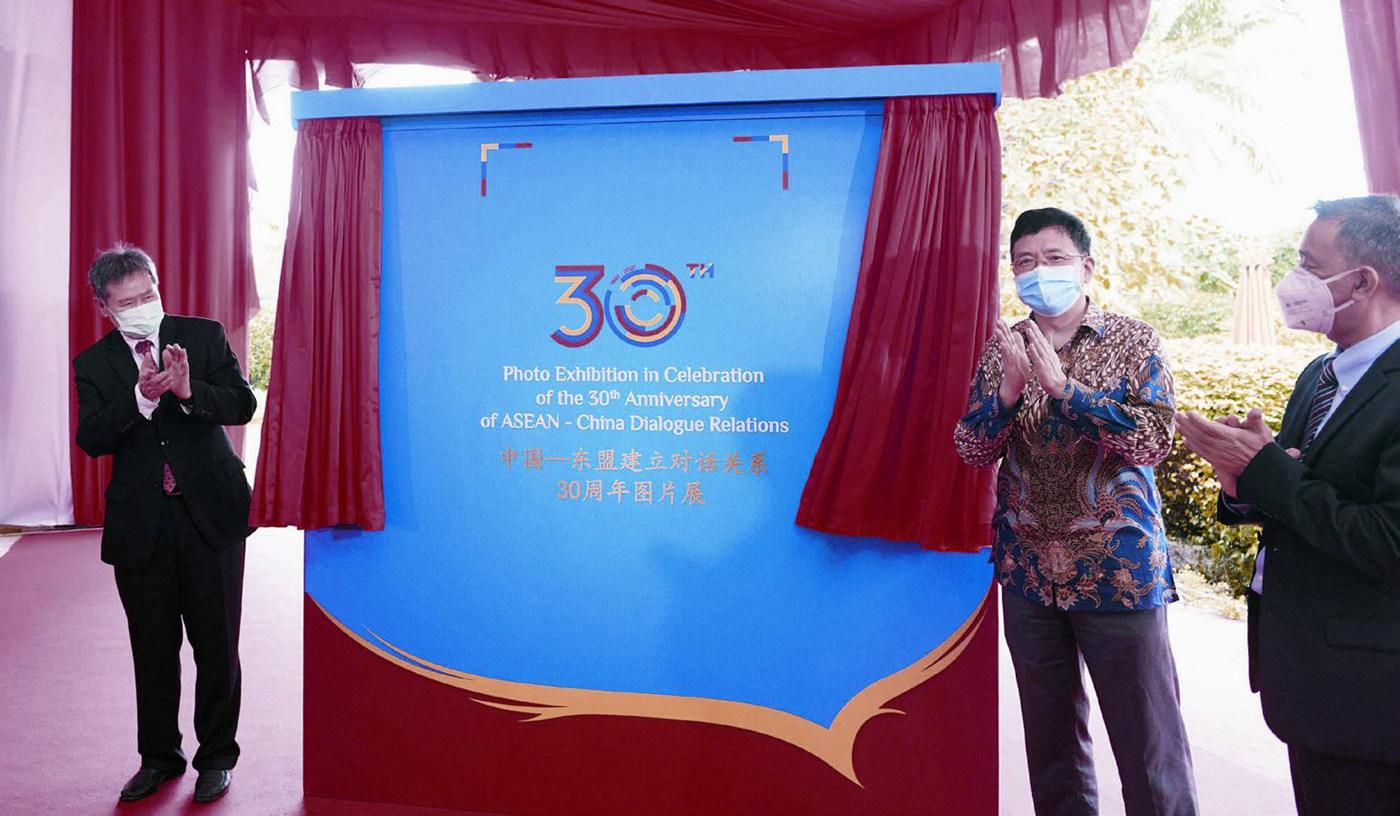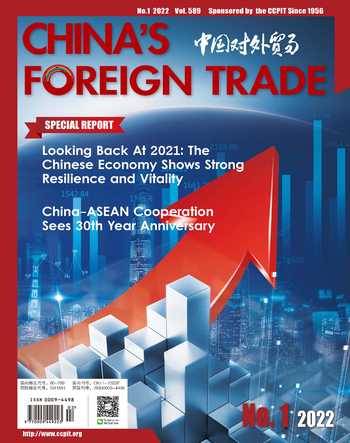China-ASEAN Cooperation Sees 30th Year Anniversary
By Ada Wong
The year 2021 marks the 30th year anniversary of the establishment of dialogue relations between China and ASEAN. It is also marks a year which is in the name of China-ASEAN cooperation for sustainable development.
On the occasion of the 30th anniversary of the establishment of dialogue relations between China and ASEAN, Chinese President Xi Jinping pointed out, “since the establishment of dialogue between China and ASEAN 30 years ago, the two sides have deepened their all-round cooperation and become each other’s largest trading partners. Bilateral cooperation between the two has become the most dynamic in the Asia Pacific region. Since the outbreak of COVID-19 pandemic, both sides have joined hands to fight the pandemic and overcome difficulties, showing the spirit of shared destiny for the mankind.”
Trade volume increases rapidly
Chinese consumers are very familiar with products that are imported from the ASEAN region, such as Malaysia’s white coffee, Thailand’s dried mango and Vietnam’s pitaya. Today all these products are available at the supermarket and from online shopping platforms. According to the General Administration of Customs, nearly 1,500 kinds of agricultural products and food from ASEAN countries can be exported to China.
When China and ASEAN started to establish dialogue in 1991, bilateral trade volume was only USD 7.96 billion. In January 2010, the China-ASEAN free trade zone was completed and the bilateral trade volume reached USD 292.78 billion that year, 37 times that of 1991 with an annual growth rate of more than 20%.
The year 2019 witnessed the fur- ther upgrade of the China-ASEAN free trade zone. According to statistics, the zero tariff policy covered more than 90% of the trade products from both sides. In 2020, the bilateral trade volume between China and ASEAN reached US 684.6 billion: according to the Ministry of Commerce, the trade scale between China and ASEAN has expanded 85 times in the past 30 years.
Bilateral trade has shown positive growth in 2020 despite the negative impact from the Covid-19 pandemic. ASEAN has become China’s largest trading partner, and China has been ASEAN’s largest trading partner for 12 consecutive years. Both sides have seen a historical breakthrough for being each other’s largest trading partner.
In the first three quarters of 2021, trade between China and ASEAN maintained a growth momentum. China’s foreign trade with ASEAN reached RMB 4.08 trillion, an increase of 21.1% from the previous year. ASEAN continued to maintain its position as China’s largest trading partner, accounting for 14.4% of China’s total foreign trade.
With further implementation of the Belt and Road Initiative, key infrastructure projects including the China-Laos railway, the Jakarta-Bandung HighSpeed Railway, the New International Land-Sea Trade Corridor by China and Singapore, and “two countries, two parks”of Indonesia and Malaysia, have made important progress, which increased connectivity between China and ASEAN countries and made cross-border logistics more smooth.

Now the sea-rail inter-mode lines of west Land-Sea Trade Corridor have expanded from only one line between Chongqing, Guilin and Singapore in 2017 to lines in six directions. Freight has increased from one train to more than 10 trains each week, making this the main channel for exporting products of China’s west region and one of fastest and most convenient channels connecting China and ASEAN.
In order to ensure the smooth operation of the new western landsea trade corridor trains, customs of 15 places along the channel signed a memorandum of cooperation between regional customs to jointly support the construction of this new western land and sea corridor, to establish a communication system, strengthen overall business coordination, jointly promote the construction of regional customs information sharing platform, and innovate the regulation system. The purpose is to clear any obstacles in logistics and customs, and improve trade security and convenience along the new land and sea corridor.
RCEP injects new momentum
From January 11, 2022, the Regional Comprehensive Economic Partnership (RCEP) started to take effect, signaling the opening of the world’s largest free trade zone.
RCEP has 15 member countries including China, Japan. South Korea, Australia, New Zealand and 10 ASEAN countries. RCEP countries account for about 30% of the world in terms of population, economic scale and trade volume.
After RCEP takes effect, more than 90% of commodity trade among the RCEP member countries will enjoy zero tariffs. On the day of the RCEP taking effect, more than 65% of trade between China and ASEAN, Australia and New Zealand will instantly have no tariffs added.
Do Nam Trung, the Chief Counselor of the Consulate of Vietnam in Nanning, said that the effect of RCEP will greatly advance economic globalization and usher in a more positive era of economic and trade exchanges between ASEAN and China. The world’s largest free trade zone will open up member states’ markets, stimulate economic growth, and bring convenience to people’s lives.
Hu Yishan, Senior Researcher of the Singapore Institute of International Affairs, said that at the time of the rise of unilateralism and protectionism, the RCEP has shown the world the advantages of shared market and common prosperity, and injected new vitality into free trade and multilateralism. It will help reduce tariff and non-tariff barriers and achieve freer trade in goods and services. ASEAN countries are also eager to further tap into China’s huge market, find business opportunities and accelerate the economic recovery of local regions.
Zhai Kun, professor of the School of International Relations of the Peking University, said that there are five “10+1”relations under the framework of the RCEP. As one of the most eye-catching bilateral relationships, China-ASEAN relations have developed into the most successful and dynamic model of Asia-Pacific regional cooperation. The comprehensive strategic partnership between China and ASEAN will promote the development of RCEP and contribute more solutions to regional and global governance.
“The implementation of RCEP has created a very good opportunity for deepening supply chain cooperation between China and ASEAN and improve the resilience of cooperation. The trade and investment liberalization and facilitation will bring more benefits to the regional economy,” said Zhao Jinping, researcher at the Research Center for the Construction of Free Trade Zones of the Counselor’s office of the State Council.
Yuan Bo, Deputy Director and researcher of the Asian Research Institute of the Institute of International Trade and Economic Cooperation of the Ministry of Commerce of China, said that RCEP’s cumulation rules of origin will help build a mutually beneficial cooperation system in industrial chain and supply chain, and also facilitate more sophisticated value chain cooperation in the region. In this process, the advantages of China and ASEAN countries will be further strengthened, such as China’s sound industrial system and the low manufacturing costs of ASEAN countries.
Professor Cheng Hanping, Director of the Vietnam Research Center of the Zhejiang University of Technology and researcher of the South China Sea Research Center of Nanjing University, said that after the taking effect of RCEP, more than 90% of the goods in the region will achieve zero tariffs. RCEP will significantly reduce trade costs, enhance product competitiveness of the region, gradually give play to the trade creation effect and bring more opportunities to enterprises and more choices to consumers. It will also greatly promote economic recovery of the ASEAN countries in this post-pandemic era.
Cheng Hanping said that RCEP’s cumulation rules of origin will facilitate trade in intermediate products and stabilize and strengthen regional supply chains. This is a winwin result for enterprises as well as China and ASEAN.
Yuan Bo said the RCEP will have a comprehensive effect, especially the introduction of higher standard rules in the fields of competition policy, intellectual property rights and transparency. This will result in more competition, and propel the reforms in member countries, such as enhancing protection of intellectual property rights and reducing uncertainties for business operation. Also, RCEP will provide a better environment for investment cooperation of companies of both China and ASEAN, and facilitate high-quality development of bilateral trade and investment cooperation.
Zhao Jinping said that bilateral trade relations between China and ASEAN countries have become closer in the past two years, mostly driven by mutual investment. In recent years, mutual investment between China and ASEAN countries has maintained positive growth. For example, China’s investment in Singapore, Vietnam and Indonesia has been increasing by 12.1% each year from 2016 to 2019, significantly higher than the average growth rate of China’s outbound investment.
“Enterprises of both China and ASEAN countries constitute the supply chain, and the mutual corporate investment has formed a cross-border industrial chain and supply chain, which play an important supporting role in deepening trade relations between China and ASEAN. This is an important cutting point for our policy-making to improve China-ASEAN supply chain in the future,” said Zhao Jinping.
- China’s foreign Trade的其它文章
- Looking Back At 2021:The Chinese Economy Shows Strong Resilience and Vitality
- CCPIT Work Meeting 2021 Is Held Virtually in Beijing
- Joint Effort to Resolve Disputes in Intellectual Property Rights
- Six Industry Opportunities As A Result of Population Change
- Demands for Coal-fired Power Will Reach New High
- IDC’s Top 10 Predictions on China’s ICT Market In 2022

